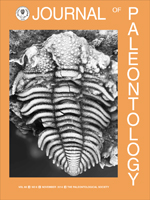A new dataset of the highest quality specimens of fully articulated, juvenile and mature exoskeletons of the Czech middle Silurian trilobite Aulacopleura koninckii offers improved resolution of original morphology by all measures considered. The degree of variation in both size and shape among later meraspid instars was constant, and suggesting targeted growth in both attributes. Size-related changes in the shape of the dorsal exoskeleton and of the segment-invariant cephalon were detected in the meraspid stage, but in the holaspid phase marked allometry was detected only in the trunk region, with the pygidium showing notable expansion in relative size. Meraspid cranidial allometry was subtle, with significant changes in instar form detectable only after several molts. This trilobite developed gradually throughout meraspid and holaspid ontogeny, with the synchronous cessation of trunk segment appearance and release at the onset of the holaspid phase. Precise development of shape and size occurs in the context of marked variability in the number of trunk segments at maturity, illustrating complex patterns of character variation within a species. A new systematic description establishes the synonymy of several subspecies with A. koninckii.
How to translate text using browser tools
1 November 2014
Size, shape, and systematics of the Silurian trilobite Aulacopleura koninckii
Paul S. Hong,
Nigel C. Hughes,
H. David Sheets
ACCESS THE FULL ARTICLE

Journal of Paleontology
Vol. 88 • No. 6
November 2014
Vol. 88 • No. 6
November 2014




